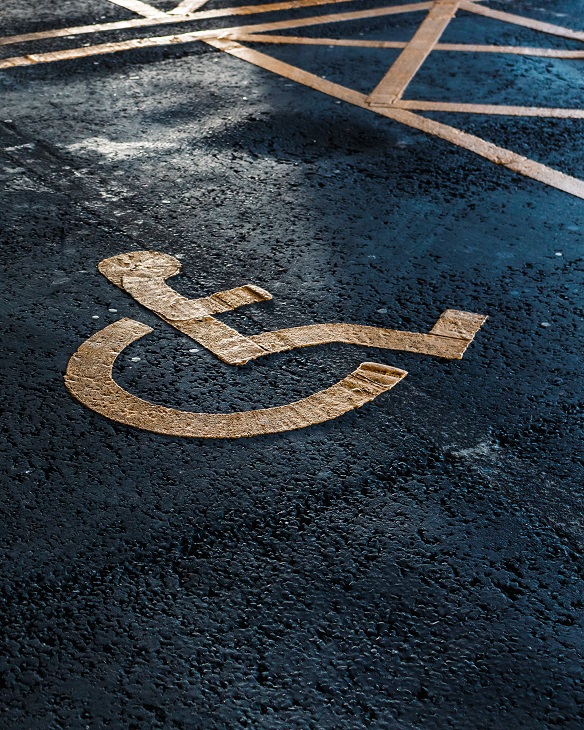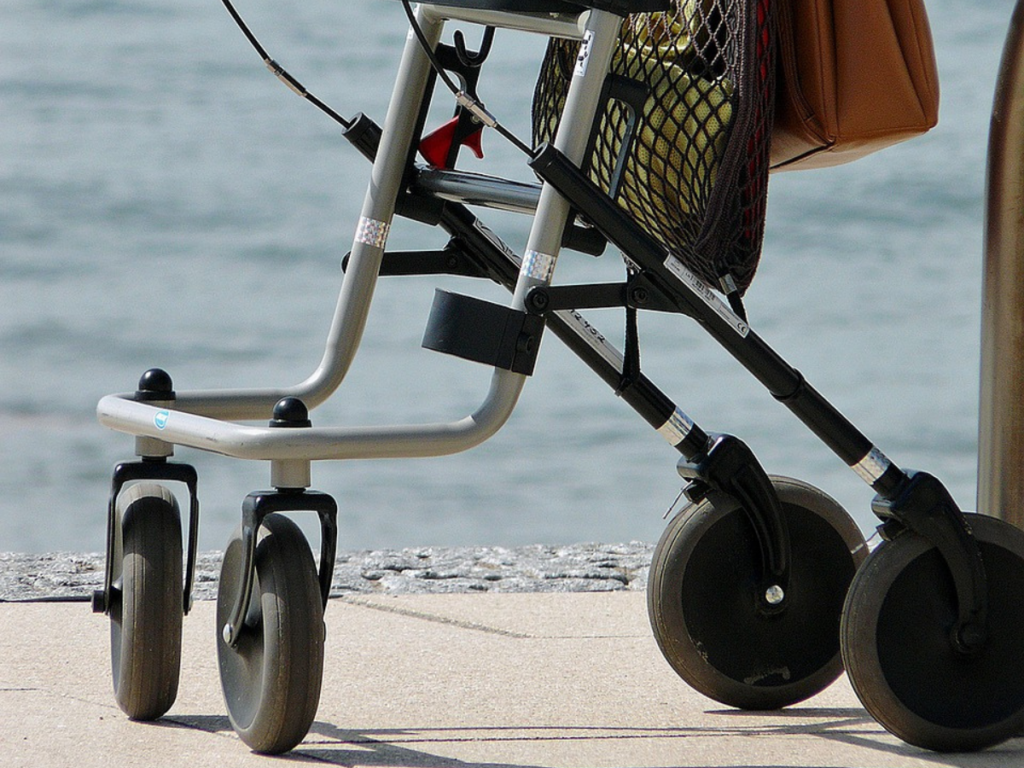Parking spaces designated for individuals with disabilities play a crucial role in fostering inclusivity and accessibility in our communities. That’s why the Americans with Disabilities Act ensures that disabled parking is available nationwide – from South Carolina handicap parking laws to Vermont handicap parking rules to Florida handicap parking requirements, every disabled American citizen is legally entitled to accessible parking.
However, navigating the challenges associated with handicap parking can be a complex task for both drivers with disabilities and their advocates. From limited spaces to misuse by others, the issues surrounding handicap parking are diverse and impactful. Today we’ll explore some of the various challenges faced by drivers with disabilities and their advocates, shedding light on the importance of understanding and addressing these issues. Then we’ll provide practical tips and insights aimed at empowering individuals to navigate handicap parking challenges more effectively, contributing to a more accessible and equitable environment for everyone.
What is Disabled Parking and Why is it So Important?
Accessible parking, commonly known as disabled parking, is a critical element in creating an inclusive environment for individuals with disabilities. These designated parking spaces are strategically placed in public areas to ensure that people with mobility challenges have equal access to services, facilities, and opportunities. Understanding the importance of disabled parking goes beyond mere convenience; it is a fundamental step towards fostering a society that values and prioritizes the needs of all its members.
Ensuring Equal Access to Public Spaces
Disabled parking spaces are designed to reduce barriers and ensure that individuals with disabilities can access public spaces with the same ease as everyone else. These designated spots are typically located close to entrances, minimizing the distance individuals with mobility challenges need to travel. This proximity is vital for those who use mobility aids like wheelchairs, walkers, or crutches, enabling them to navigate parking lots and access buildings without undue physical strain.
As we mentioned above, handicap parking is a legal requirement in every state. Michigan disabled parking requirements will be very similar to Tennessee handicap parking regulations; Wyoming disabled parking laws will mirror handicap parking laws in Alabama; and so on throughout the entire country.
By providing convenient and accessible parking, society acknowledges the diverse needs of its members, fostering a sense of inclusivity and equal opportunity. This inclusivity extends beyond physical access to symbolize a commitment to creating spaces where everyone feels welcome and valued.
Facilitating Independence and Autonomy
Accessible parking is a linchpin in promoting independence and autonomy for individuals with disabilities. For many, the ability to park close to entrances means the difference between participating fully in public life and facing significant challenges. This autonomy is particularly crucial for individuals with mobility impairments who may have difficulty covering long distances or navigating uneven terrain.
The availability of disabled parking spaces empowers individuals with disabilities to engage in daily activities, from shopping and dining to accessing healthcare services and cultural events. This autonomy contributes to a sense of agency and self-sufficiency, breaking down barriers that may otherwise limit opportunities for social engagement and personal fulfillment.
Addressing Specific Needs
Disabled parking spaces are not only about proximity but also about addressing specific needs. Access aisles adjacent to these spaces provide additional room for wheelchair users to exit and enter vehicles comfortably. This feature is essential for those who require assistive devices and aids to move independently. The design considerations associated with disabled parking spaces, such as wider spaces and accessible pathways, cater to the diverse range of mobility challenges that individuals with disabilities may face.
By tailoring parking spaces to specific needs, society acknowledges the diversity within the disabled community and takes tangible steps to accommodate these unique requirements. This attention to detail is a testament to the commitment to inclusivity and accessibility for all.
Legal Protections and Equal Rights
Beyond a societal commitment to inclusivity, disabled parking is backed by legal protections that underscore the importance of equal rights. Many countries have established regulations and laws to enforce the provision of disabled parking spaces, outlining specific requirements for businesses, public facilities, and parking lots to comply with accessibility standards.
These legal provisions not only protect the rights of individuals with disabilities but also emphasize the collective responsibility to create an environment that accommodates everyone. By upholding these legal standards, societies ensure that disabled parking is not just a courtesy but an essential component of promoting equal rights and opportunities for individuals with disabilities.

What are the Challenges Faced by Disabled Drivers Navigating Handicap Parking?
Accessible parking spaces are a lifeline for drivers with disabilities, providing them with the opportunity to participate fully in the community. However, despite the presence of designated handicap parking spots, drivers with disabilities often face a myriad of challenges that hinder their ability to access these crucial spaces.
Though legal requirements are similar or the same nationwide, from Oklahoma disabled parking laws through to Alaska disabled parking requirements, that doesn’t mean handicap parking is always a seamless process for every disabled individual. From limited availability to issues of misuse and enforcement, the obstacles are diverse and impactful. Let’s now delve into the various challenges faced by drivers with disabilities when navigating handicap parking, shedding light on the complexities that surround this essential aspect of accessibility.
Limited Availability: The Constant Struggle for Spaces
One of the primary challenges confronted by drivers with disabilities is the limited availability of handicap parking spaces. In many parking lots, the number of designated spots is often insufficient to accommodate the growing population of individuals with disabilities. This scarcity results in increased competition and frustration among drivers who genuinely require these spaces. It is not uncommon for individuals with disabilities to circle parking lots multiple times, hoping to find an available spot, only to face disappointment.
The limited availability of handicap parking spaces reflects a broader societal issue—a lack of consideration for the needs of those with disabilities. Addressing this challenge requires a collective effort to reassess and expand the allocation of accessible parking spaces in public areas, ensuring that they are proportionate to the actual demand.
Misuse and Enforcement: Battling Inconsiderate Behavior
Misuse of handicap parking spaces is an all-too-common challenge that exacerbates the difficulties faced by drivers with disabilities. Non-disabled individuals frequently park in these designated spaces without the proper permits, denying those who genuinely need the spaces the opportunity to access them. This inconsiderate behavior not only contributes to the frustration of drivers with disabilities but also perpetuates a culture of disregard for accessibility regulations.
Enforcement of handicap parking regulations is another facet of this challenge. In many instances, inadequate monitoring and lax enforcement contribute to the widespread misuse of handicap spaces. Strengthening enforcement mechanisms and imposing stricter penalties for violations are crucial steps in curbing this issue. Public awareness campaigns can also play a role in educating the general population about the importance of respecting handicap parking regulations.
Inadequate Infrastructure: Physical Barriers to Accessibility
While the presence of handicap parking spaces is a step in the right direction, the overall infrastructure surrounding these spaces often falls short in providing true accessibility. Obstacles such as poorly maintained ramps, insufficient space for wheelchair deployment, and poorly marked pathways can turn a seemingly accessible parking spot into a challenging ordeal for drivers with disabilities.
Improving the infrastructure around handicap parking spaces involves not only maintaining the designated spots but also ensuring that the entire journey from the parking space to the destination is obstacle-free. This includes well-maintained pathways, accessible entrances, and clear signage to guide individuals with disabilities seamlessly.
Lack of Education and Awareness: Overcoming Ignorance
A pervasive challenge in the realm of handicap parking is the lack of education and awareness among the general public. Many individuals remain unaware of the specific needs of those with disabilities and the importance of accessible parking. This ignorance often translates into unintentional insensitivity, such as occupying access aisles or blocking pathways that are essential for individuals with mobility challenges.
Addressing this challenge requires comprehensive educational initiatives aimed at raising awareness about the needs of individuals with disabilities. Public service announcements, educational programs in schools, and community outreach can contribute to fostering a culture of empathy and understanding. The goal is to create an environment where everyone is conscious of the impact their actions can have on the accessibility of those with disabilities.
Emotional Toll: The Hidden Struggle
Beyond the tangible challenges of finding parking spaces and dealing with infrastructure issues, drivers with disabilities often bear an emotional toll. The constant battle against societal barriers and the frustration of encountering inaccessible spaces can contribute to feelings of isolation, stress, and even a sense of helplessness.
Acknowledging and addressing the emotional toll of navigating handicap parking challenges is crucial for holistic support. Counseling services, support groups, and community engagement programs can provide drivers with disabilities an avenue to share their experiences, seek advice, and find solace in a community that understands their unique struggles.

Tips for Disabled Drivers and Advocates
Here are some practical tips to help navigate disabled parking challenges and ensure a smoother experience for those who depend on these crucial spaces.
1. Know the Regulations
Understanding the specific regulations governing disabled parking is the first step in navigating the challenges. As we mentioned earlier, disabled parking laws are similar nationwide, but they do differ in certain ways between certain states – New York disabled parking requirements may not be exactly the same as Rhode Island disabled parking regulations, for example.
For this reason, it’s important to familiarize yourself with local laws and guidelines regarding the use of handicap parking spaces, including eligibility criteria for obtaining a disability parking permit. This knowledge empowers drivers with disabilities and their advocates to navigate parking challenges confidently, armed with a clear understanding of their rights and the rules in place.
2. Display Proper Permits
For drivers with disabilities, displaying the appropriate parking permits is crucial. Ensure that the disability parking placard or license plate is visible and properly displayed when using designated parking spaces. Advocates can assist by reminding and assisting individuals with disabilities in maintaining up-to-date and valid permits, facilitating a smooth parking experience.
3. Report Misuse
Misuse of handicap parking spaces is unfortunately common, with able-bodied individuals occupying these spots illegally. Advocates play a vital role in reporting such violations. Encourage individuals with disabilities to report misuse to local authorities, ensuring that enforcement measures are in place to deter offenders. Many jurisdictions provide hotlines or online platforms for reporting misuse, making it easier for advocates to take action against unauthorized use.
4. Plan Ahead
Planning ahead is crucial for drivers with disabilities to mitigate the challenges associated with finding accessible parking. When possible, research parking options before arriving at a destination. Identify the locations of handicap parking spaces, accessible entrances, and any potential obstacles. This proactive approach allows drivers with disabilities to navigate parking lots more efficiently and reduces stress associated with uncertainty.
5. Utilize Mobile Apps
Technology can be a powerful ally in overcoming disabled parking challenges. Several mobile apps provide real-time information about accessible parking spaces, including their locations and availability. Encourage individuals with disabilities and their advocates to explore and use these apps to plan their routes and identify parking options conveniently.
6. Educate the Community
Advocacy efforts should extend beyond individuals with disabilities. Educating the community about the importance of respecting handicap parking spaces is key to fostering a culture of inclusivity. Consider organizing awareness campaigns, distributing informational materials, or leveraging social media platforms to share insights on the challenges faced by drivers with disabilities. The more the community understands the impact of their actions, the greater the likelihood of creating a supportive and respectful environment.
7. Collaborate with Businesses and Authorities
Advocacy often involves collaboration with local businesses and authorities. Work with businesses to ensure that they provide an adequate number of accessible parking spaces and maintain the infrastructure surrounding these spaces. Engage with local authorities to address any issues related to enforcement, infrastructure, or accessibility standards. Building strong partnerships with stakeholders can lead to positive changes that benefit the entire community.
***
In the pursuit of a more inclusive society, it’s imperative to address the challenges faced by individuals with disabilities when it comes to parking accessibility. By raising awareness about the obstacles they encounter, we can work towards fostering a greater understanding of the need for proper utilization of handicap parking spaces. Whether you’re a driver with a disability or an advocate, together we can create a culture of respect and consideration, ensuring that these designated spaces serve their intended purpose and contribute to a more accessible world for all. By staying informed, advocating for change, and promoting awareness, we can collectively pave the way for a future where handicap parking challenges become a thing of the past.
If you need more information on disabled parking throughout all 50 states, Dr Handicap is the place for you! Need insight into Indiana handicap parking permit application, Utah handicap parking permit requirements, New Mexico handicap parking permit renewal, getting a handicap parking permit in South Dakota, the Pennsylvania handicap parking permit process, or anything in between? We’ve got you covered!
Featured image by Jakub Pabis on Pexels
